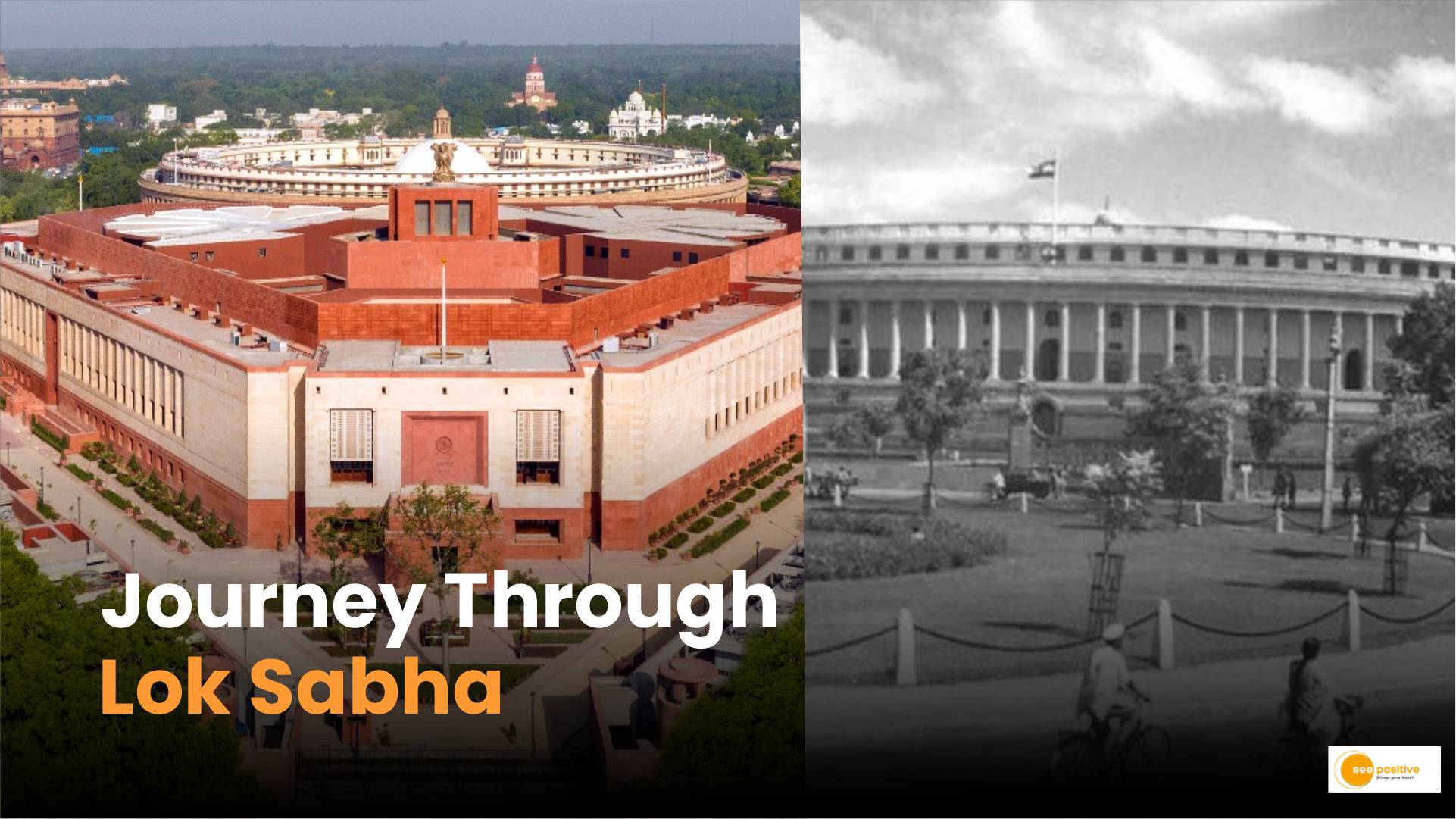The Lok Sabha, known as the House of the People, is a crucial part of India’s Parliament. Let’s explore what Lok Sabha is, how it works, and its historical journey in a simple manner.
What is Lok Sabha?
Lok Sabha is the lower house of India’s Parliament, working alongside the Rajya Sabha, which is the upper house. Members of Lok Sabha are elected by the people through a system called first-past-the-post, where the candidate with the most votes in a constituency wins. They hold their seats for five years unless the President dissolves the body based on the advice of the council of ministers. The Lok Sabha meets in the Lok Sabha Chambers of the Parliament House in New Delhi.
Initially set at 500 in 1950, the Lok Sabha’s membership, according to the Constitution, can go up to 552. Currently, there are 543 seats, with members elected by the people. Earlier, two members from the Anglo-Indian community were nominated, but this practice ended in 2020. The Lok Sabha now has a seating capacity of 888.
Out of the total seats, 131 (24.03%) are reserved for Scheduled Castes (84) and Scheduled Tribes (47). The quorum, or the minimum number of members needed for a session, is 10% of the total membership. Lok Sabha operates for five years unless dissolved earlier or extended during a state of emergency.
The Boundary Delimitation Commission of India redraws Lok Sabha constituency boundaries every ten years based on the Indian census. The last census-based redraw was in 2011, but the provision redistributing seats among states based on demographic changes was suspended in 1976.
History of Lok Sabha:
During British rule (1858-1947), legislative councils were introduced, but Indian representation waslimited. Acts like the Indian Councils Act of 1861 and the Government of India Act of 1919 increased Indian participation. The Government of India Act 1935 proposed a federal structure, and the Indian Independence Act 1947 led to the creation of India and Pakistan. The Constitution of India came into effect on January 26, 1950, establishing Lok Sabha as the lower house.
As per Article 79 of the Indian Constitution, the Parliament consists of the President and two Houses – the Rajya Sabha and the Lok Sabha. The Lok Sabha was first constituted on April 17, 1952, after the General Elections held from October 25, 1951, to February 21, 1952.
Role and Composition:
The Lok Sabha is entrusted with the responsibility of making laws, overseeing the executive branch, and representing the interests of the people. Its members, known as Members of Parliament (MPs), are elected by eligible voters through a direct election process. The Lok Sabha’s composition is designed to reflect the diversity of the country, with seats allocated based on population.
Speaker of the Lok Sabha:
The Speaker of the Lok Sabha holds a pivotal position, presiding over its sessions and ensuring orderly conduct. Elected by the members, the Speaker acts as the guardian of parliamentary traditions and exercises impartiality in the proceedings. The Speaker’s role is crucial in maintaining the integrity of debates and upholding democratic principles.
Evolution of the Lok Sabha:
Over the years, the Lok Sabha has undergone several changes to adapt to the evolving needs of the nation. Constitutional amendments, delimitation exercises, and electoral reforms have contributed to shaping the Lok Sabha into an institution capable of addressing the dynamic challenges of governance.
In the digital age, Lok Sabha has embraced technology to enhance transparency and public participation. Sessions are televised, and citizens can access information through official websites, ensuring a more informed and engaged electorate.
Landmark Moments:
The Lok Sabha has witnessed numerous landmark moments that have left an indelible mark on India’s political landscape. From crucial legislative debates to historic decisions, the Lok Sabha has been a platform for shaping the nation’s destiny. Examples include the passage of significant bills, the declaration of national emergencies, and moments of unity during times of crisis.
Women in the Lok Sabha:
The representation of women in the Lok Sabha has been a subject of scrutiny and debate. While progress has been made, there is a continued call for increased participation of women in the political sphere. Efforts to enhance gender equality in the Lok Sabha reflect the ongoing commitment to making the House more inclusive and representative of India’s diverse population.
Lok Sabha and Federal Structure:
The Lok Sabha plays a crucial role in India’s federal structure by representing the interests of states and union territories. Through a system of proportional representation, the Lok Sabha ensures that different regions have a say in the national decision-making process. This aspect of the Lok Sabha’s functioning is essential for fostering a sense of unity and cooperation among diverse states.
Future Prospects:
As India continues to evolve and face new challenges, the Lok Sabha remains at the forefront of the nation’s democratic governance. The ongoing efforts to enhance transparency, address electoral reforms, and adapt to the changing socio-economic landscape are indicative of the Lok Sabha’s commitment to serving the people.
Positive takeaway
The Lok Sabha stands as a testament to India’s commitment to democratic principles and governance. From its origins in the pre-independence era to its role as a vibrant and dynamic institution today, the Lok Sabha has played a pivotal role in shaping the nation’s destiny. Understanding its history and evolution is essential for appreciating the significance of this “House of the People” in the ongoing journey of India as a democratic republic.


